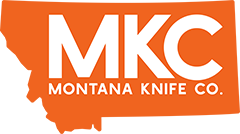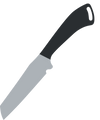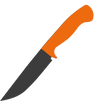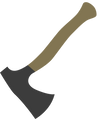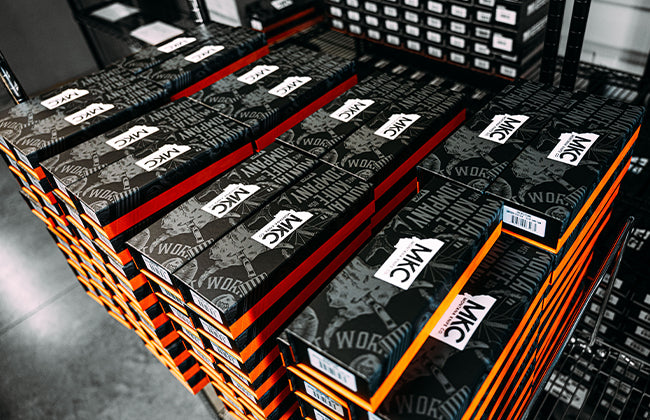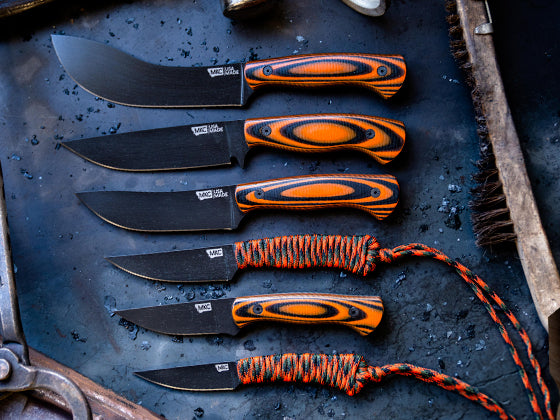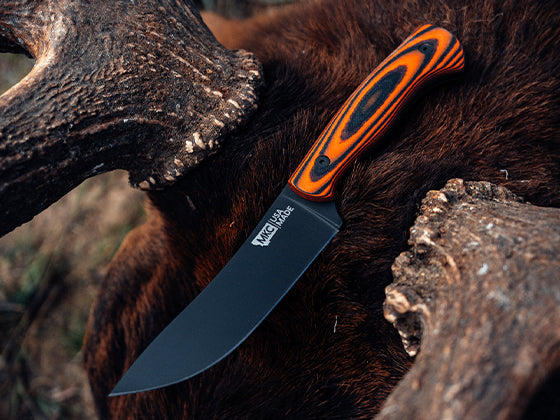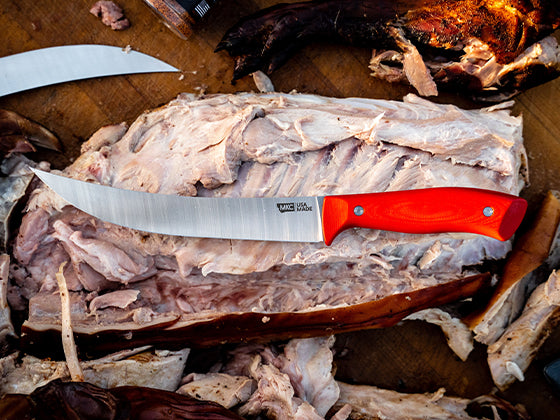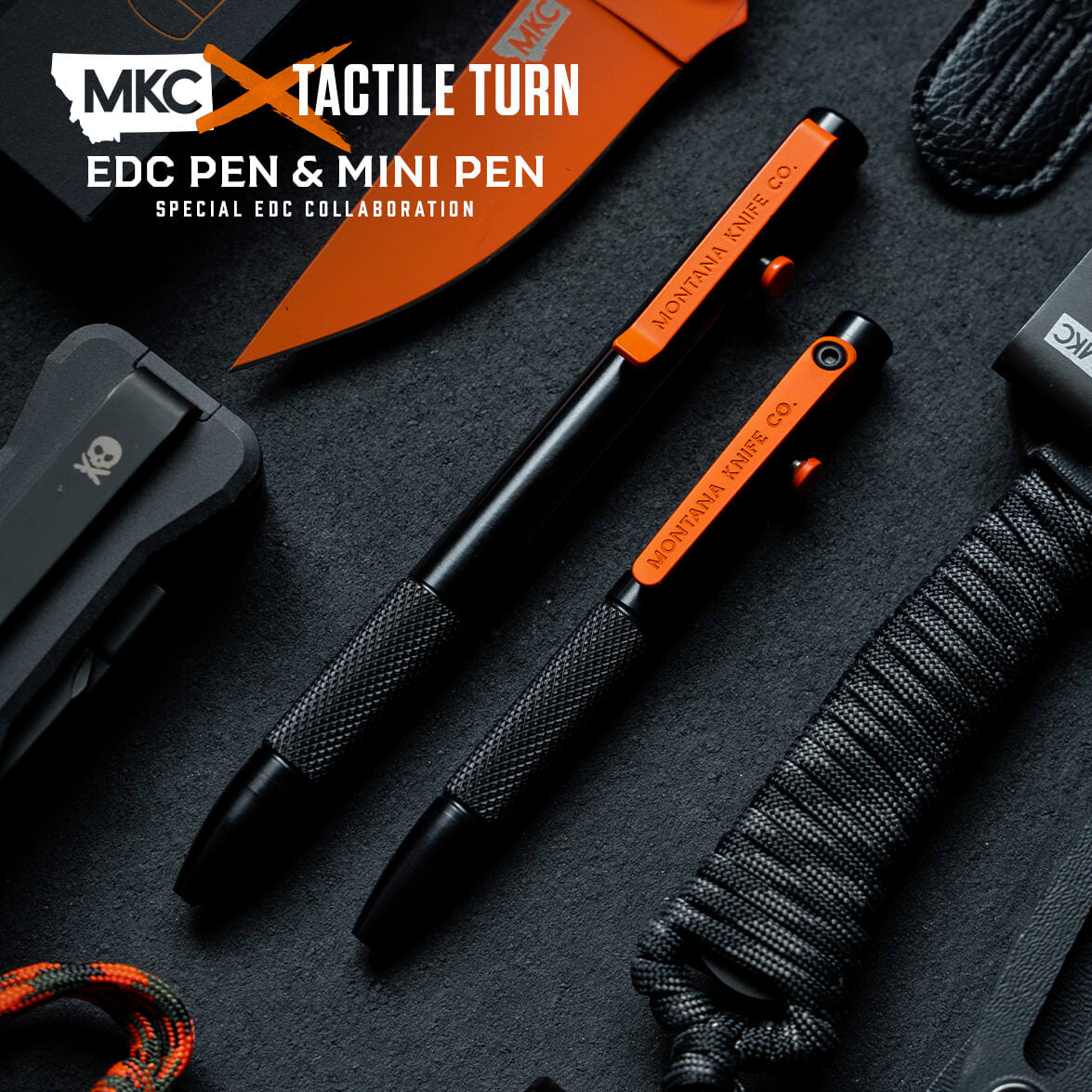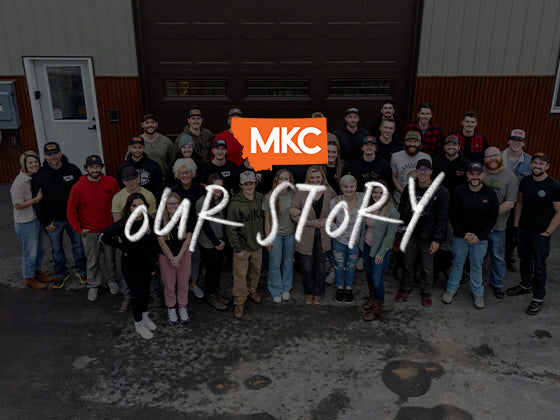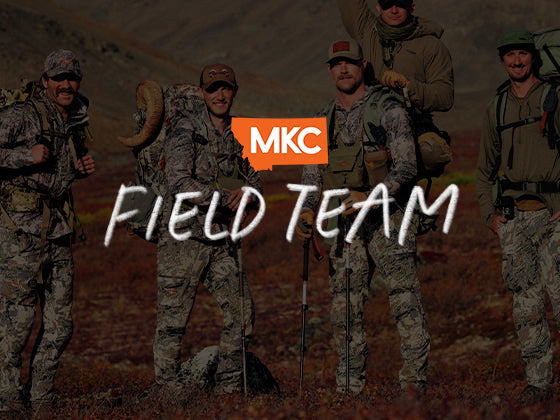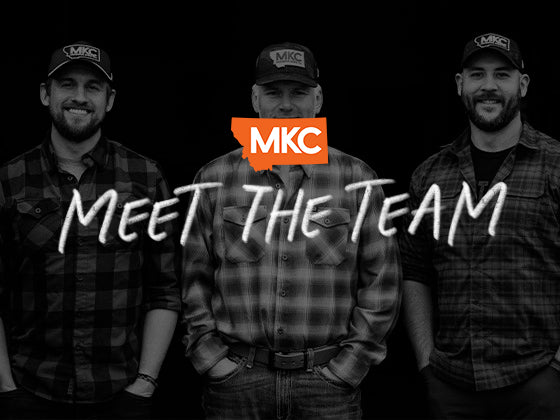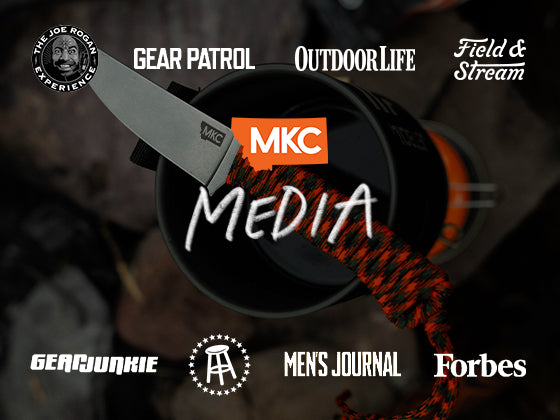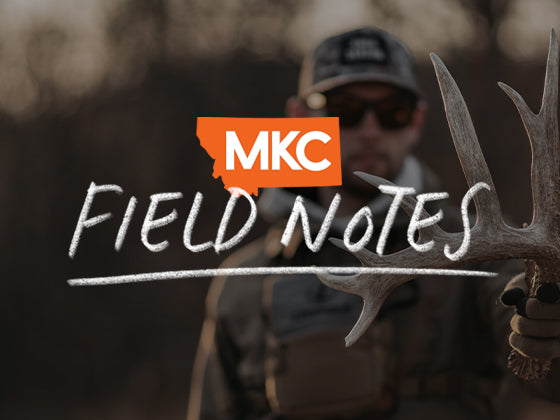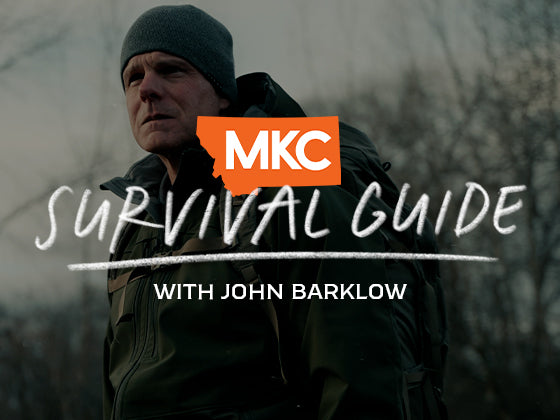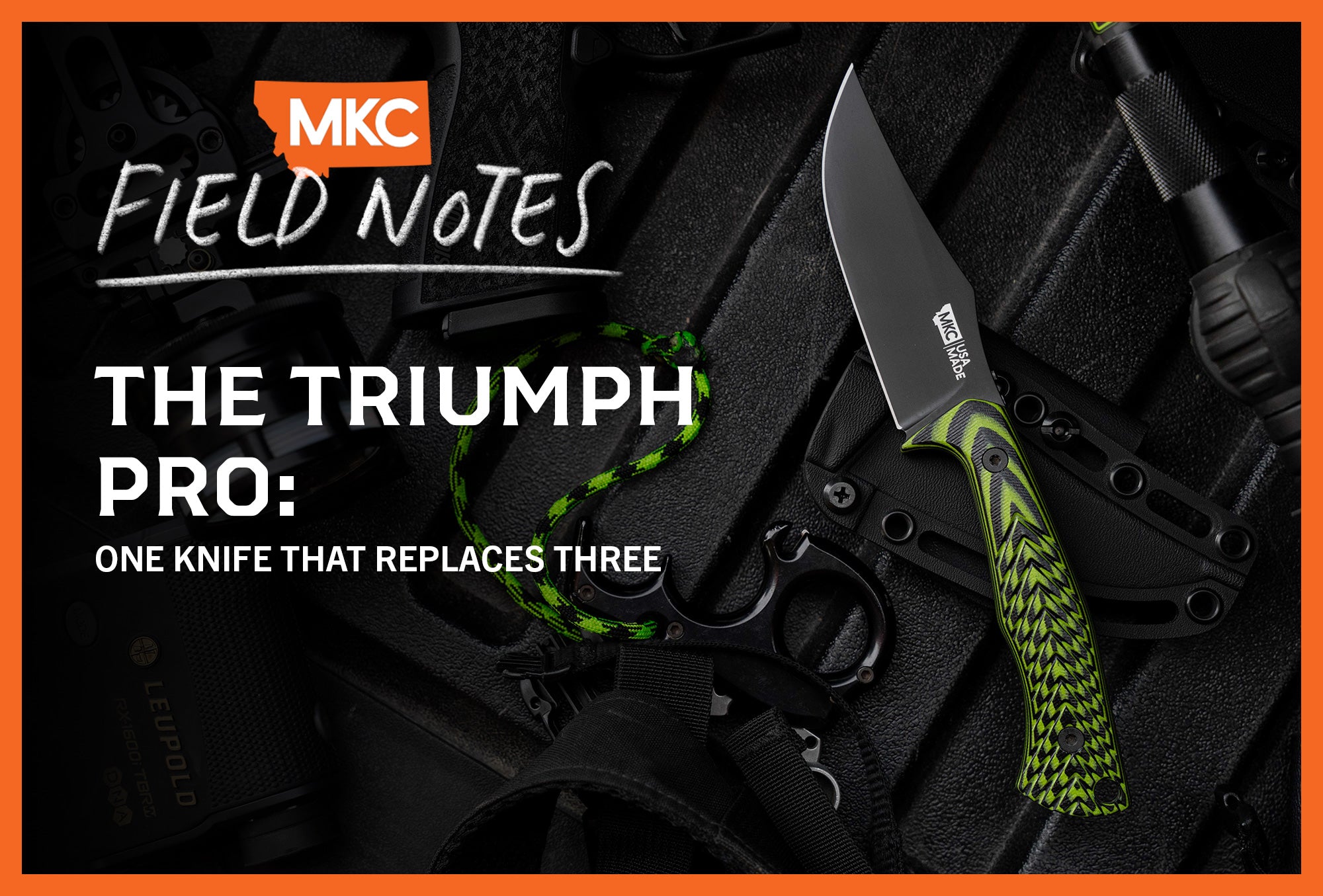Too many hunters venture into the field unprepared for a medical emergency.
An overstuffed hunting first-aid kit isn’t the solution. Less is more out on the trail. Unnecessary gear and heavy equipment slow you down and waste your energy. Instead, make sure the items you do carry serve a purpose (or several).
What’s included in the best hunting first-aid kit? Below, you’ll find a comprehensive list of life-saving supplies that often serve multiple purposes out on the hunt.

Non-Negotiable Products in the Best Hunting First-Aid Kit
SOF Tourniquet
The SOF Tourniquet can temporarily stop life-threatening bleeding. An American combat medic designed it to improve the tourniquet application process. It uses durable polyester webbing and a windlass machined from a single aluminum block for durability.
An SOF Tourniquet applies pressure to a punctured artery to stop bleeding. To use it, buckle it around the wounded limb, move it into place, take out the slack, and twist the windlass until bleeding ceases. Finally, secure the windlass in place with the C-clamp and tri-ring lock.
A tourniquet works best when applied at least two inches above the wound and not on a joint. The closer to the heart, the better. If possible, remove any clothes in the tourniquet’s way before applying it.
Try to pre-size your tourniquet to fit the smallest limb you’d need to use it on (in this case, an arm). Most tourniquets can loosen to fit larger limbs, but if they’re too loose, they won’t work on smaller limbs.
Experts recommend carrying at least two tourniquets with you on a hunting trip (or more if you’re hunting with a group). While any tourniquet helps in an emergency, quality matters in a life-or-death scenario. Consider purchasing these directly from the manufacturer instead of buying generic knock-offs from Amazon.
Hyfin Vent Chest Seal
When a sharp object punctures your lung, that open wound can create a “vacuum” in your chest cavity. Attempting to breathe in brings air through the puncture wound instead of your airway.
This can be fatal if your body can’t exchange enough oxygen to support vital functions. A Hyfin Vent Chest Seal allows you to close these puncture wounds.
The Hyfin Vent Chest Seal works by preventing air infiltration while allowing blood to escape. It’s an ideal choice for hunters since it’s blood, sweat, and contaminant agnostic. Each chest seal comes with a gauze pad to clean the surface first, plus an easy peel-and-stick application method.
A brain deprived of oxygen for too long can sustain permanent damage. Given how little space a vent chest seal two-pack needs, there’s no reason not to carry it with you on the trail.
Robertazzi Nasopharyngeal Airway
The Robertazzi Nasopharyngeal Airway (often called the “nose hose”) can re-enable breathing after airway collapse. NPAs use flexible, gentle neoprene material to minimize trauma, but they’re sturdy enough to prop open collapsed airways.
Only use the Robertazzi Nasopharyngeal Airway on people who are unresponsive or not breathing. To use it, insert it into the right side of the nose until the flared end reaches the nostril. Always make sure air is flowing through the airway after administration.
When people fall unconscious, the tongue can slide back and interfere with the airway. An NPA can be a life-saving solution when someone passes out and can’t breathe on their own.
Quick Clot Dressing
Field wounds that don’t need (or aren’t compatible with) a tourniquet may still need care. The best way to stop these wounds from bleeding in the field, as tested and approved by our military, is with a QuikClot Wound Dressing.
QuikClot gauze contains kaolin, a mineral product that speeds up the blood clotting process. It also helps to create a stronger clot, meaning the wound is less likely to reopen and bleed during recovery. While you can always carry blood clotting powder with you, using QuikClot gauze allows you to skip that step.
Start by finding the wound. Apply the gauze or pad to it while maintaining pressure. Use a compression bandage to keep the gauze in place once you’ve packed or otherwise treated the wound.
Mini Compression Bandage
A mini compression bandage, like this one from Rescue Essentials, makes a fantastic top dressing for severe wounds. It’s perfect for bleeds on joints or those that need extra blood-stopping power. A mini compression bandage saves pack real estate over a full-sized pressure dressing but gives many of the same benefits.
The Rescue Essentials Mini Compression Bandage comes with an absorbent pad already applied, so you can just roll it over a wound and secure it. For wounds that need a little extra help, consider packing or covering with QuikClot gauze first. The bandage’s dual nature makes it a valuable addition to the best hunting first-aid kit.
Eberlestock Rip-Away Medical Pouch
Try not to throw your first-aid supplies into your pack haphazardly. A first-aid kit’s purpose is to make an accessible and organized space for medicines and treatments. A sturdy container with multiple pockets or sections is non-negotiable.
Our pack of choice is the Eberlestock Rip-Away Medical Pouch. It’s a convenient, durable case that can mount on the outside of your hunting pack or fit inside it. It features a Velcro MOLLE mounting panel that, as the name implies, allows you to “rip it away” in an emergency. There’s no faster way to access your pack.
The Rip-Away Pouch features a large main pouch with elastic straps for organizing your first-aid equipment. It features both a zipper and a buckle closure to prevent accidental spillage on the trail. It’s the perfect carrying case for all your first-aid supplies.
Space Blankets
A space blanket is already a great addition to your hunting supplies, but the best hunting first-aid kit always has a backup. Hypothermia can threaten your life, and a good space blanket, like this one from Titan Survival, is your final line of defense against it.
A mylar space blanket reflects as much as 90% of your body heat back to you. They take up next to no space in your pack, and they’re waterproof, windproof, and reusable, so they’re useful for more than just first aid. You can use them for ground cover or to make a waterproof shelter, for example.
The goal is always to prepare for any weather possibilities before you embark on your hunting trip. However, if you find yourself up a creek without a paddle, a space blanket will keep you warm and dry until you can find shelter.
SAM Splint
Breaking a bone on the trail can ruin a hunting trip. While most bone breaks aren’t life-threatening, they can be a serious issue when you’re alone, especially if you break a leg or an arm.
SAM Splints are inexpensive and easy to use, even on yourself, and they bring important stabilization for broken bones. They come in multiple sizes, treating everything from fingers to femurs, and they’re affordable, too.
While they take up more room in your pack than most of the supplies on this list, consider including some in your hunting first-aid kit.
Many ultralight hunters consider splints optional, if only because you can improvise a splint relatively easily. SAM Splints come in handy for more than just broken bones, though. You can also use them to form neck braces for cervical injuries, funnel water, shovel snow, devise a paddle, and more.
If you hunt with dogs, you can use SAM Splints on them, too.
Comfort Supplies
The best hunting first-aid kit isn’t complete without everyday supplies that keep you comfortable. Pain medications, Band-Aids, moleskin, Benadryl, hand warmers, and tweezers all come in handy out on the hunt.
While some ultralight backpackers might sacrifice comfort supplies to keep ounces to a minimum, we can’t condone that. It’s true that moleskin is unlikely to save your life, but it can certainly make your hunting trips more pleasant... and keep you out there for longer.

The Best Hunting First-Aid Kit: Final Thoughts
Most pre-made hunting first-aid kits don’t include all the items you need in an emergency. The best hunting first-aid kit references the MARCH protocol:
- Massive hemorrhage
- Airway
- Respiration
- Circulation
- Hypothermia
These are the most common injuries that can put your life in danger quickly, in that order.
Whether you build your own hunting first-aid kit or buy a pre-made one, keep MARCH in mind. Bring an effective tourniquet for a massive hemorrhage, a nose hose for the airway, a chest seal for respiration, and a space blanket to keep hypothermia at bay.
And don’t stop there! The best hunting first-aid kit has plenty of room for other treatments, too, whether they’re life-saving or for personal comfort.
by Josh Smith, Master Bladesmith and Founder of Montana Knife Company
